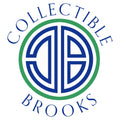The Legend and Legacy of Blue Willow
I’d like to tell you a story…
Once upon a time there was a wealthy Mandarin, who had a beautiful daughter named Koong-se. The Mandarin had plans for Koong-se to marry a powerful Duke. But Koong-se had fallen in love with her father’s humble clerk (Chang). Obviously, this could not happen because of the difference in their social class. Their love was discovered by her father who built a high fence around his house to keep the lovers apart. The Duke arrived by boat to claim his bride, bringing a box of jewels as a gift. The wedding was to take place the day the blossom fell from the willow tree.
The night before Koong-se was to wed the duke, Chang disguised himself and slipped into the house and escaped with Koong-se (and the jewels). The alarm was raised and they ran over the a bridge, chased by the Mandarin, whip in hand. They escaped to the Duke’s ship sailed to a secluded island where they lived happily for years. But one day, the Duke discovered their hiding place and sent soldiers who captured and killed the two. The gods, moved by their plight, then transformed the lovers into a pair of doves.
I am sure that there are many of you familiar with this fairy tale but did you know these stories were originally most likely invented as marketing ploys to promote the various Willow patterns. The stories are actually thought to be loosely based on the Japanese fairy tale “The Green Willow” and other ancient fairy tales from China about the constellations that tell the story of lovers separated and envied by the Gods for their love. Through the years there have been many variations on this story and it was even made into an opera called “The Willow Pattern” in 1901.
Even though it looks Asian, the Blue Willow pattern originated in England. The first Blue Willow was made in 1780 by engraver Thomas Minton who sold the design to Thomas Turner who then mass produced the pattern. This pattern is an example of chinoiserie – European interpretation and depiction of Chinese art and culture.
There are over 400 documented makers of Blue Willow in England and 500 worldwide. Spode was an early English maker. And Buffalo China was the first American producer. But it has been made in France, Sweden, Japan, Denmark, Germany, Puerto Rico, Poland, and Thailand. But ironically this pattern was not made in China until the 1980s.
What are the criteria for this pattern? To be Blue Willow there has to be a bridge, a weeping willow, birds, three men, a pagoda, island, boat, fence, Chinese pine trees. There is also usually a border on the outside and inside of the edge. It comes in the standard blue and white but also red, pink, mulberry, green, brown, gold, mustard, and multicolor combos usually called “Gaudy Willow.”
Blue Willow became known as “Blue Collar China” because it was commonly found in diners (and which is also where the term “Blue Plate Special” came from.) The antique 1780-1820 English pieces are highly valuable along with any unique pieces (covered dishes, coffee pots). Some of my favorite pieces that I’ve had in my shop have been salt and pepper shakers, butter dishes, a garlic jar, and a recent rolling pin. My family uses Churchill Blue Willow for our everyday dining and also entertaining and it always gets comments from our guests. I also collect antique and vintage English covered dishes. But if you are looking to start a collection of your own, besides Churchill, Spode and Johnson Brothers also still produce a nice everyday line today. And as far as collecting antique and vintage pieces, you just have to keep your eye out. But just a hint, I have several pieces currently available in my shop!
